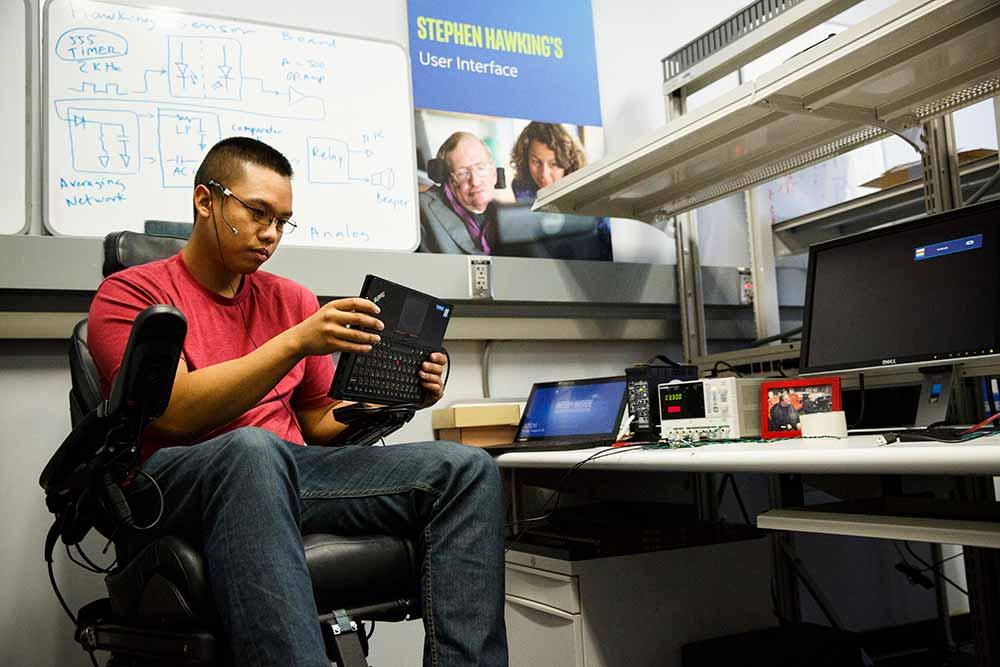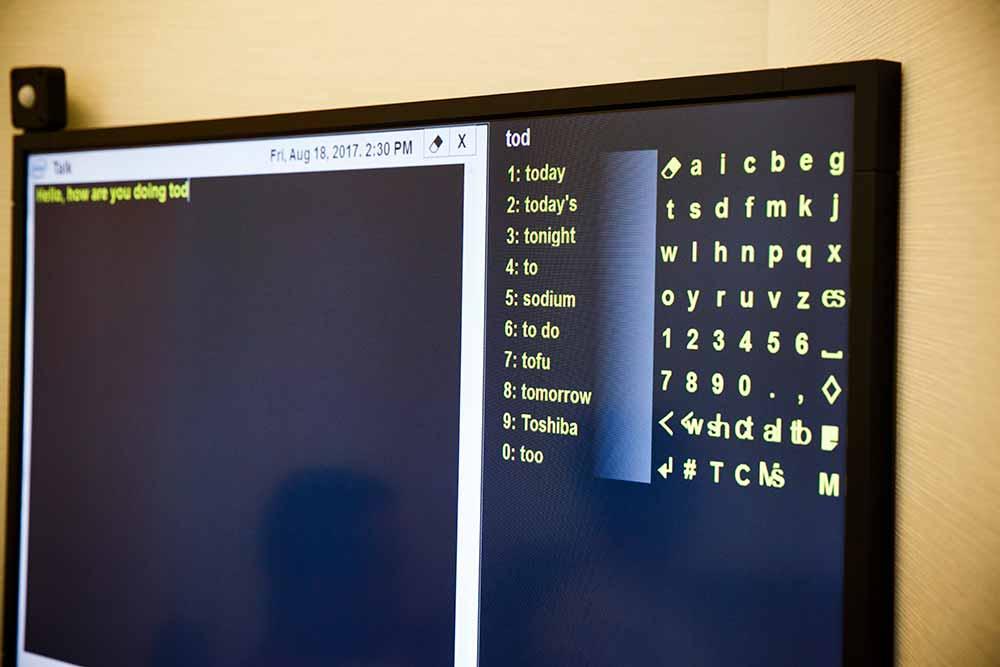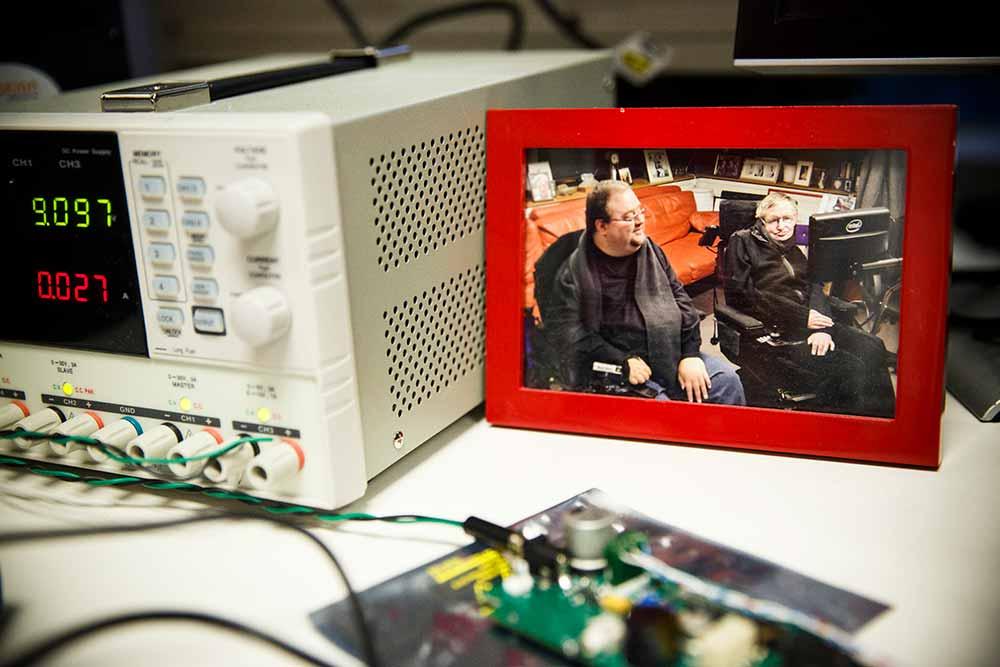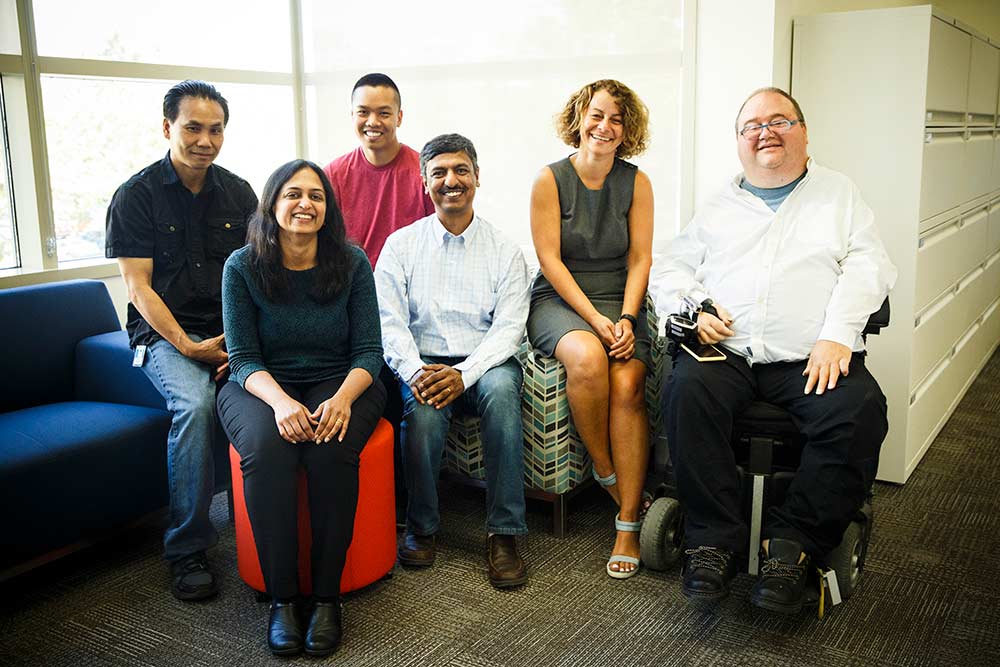In the mid-eighties, Stephen Hawking's life almost ended. During a trip to Geneva, he picked up pneumonia, which hit the weakened body badly - the professor already started having serious health problems. He was lying unconscious with a connected ventilation apparatus, and the doctors practically put a cross on Hawking: having no better alternative, they suggested to his wife Jane to turn off the apparatus.

But Hawking's wife knew that he had cheated death before. At 21, Hawking was diagnosed with amyotrophic lateral sclerosis, also known as Charcot's disease. The doctors' forecasts were disappointing - they believed that Stephen had only a few years of life left. Then Jane took him home to Cambridge, and Hawking decided to spend the remaining time with benefit - he sat down to write the book A Brief History of Time.
Then there was a period of the most difficult, but still recovery. Hawking made a tracheotomy that saved his life, but damaged his vocal cords. A progressive disease prevented Stephen from writing either by hand or on the keyboard. Completion of the book remained under threat - he could neither dictate the text nor write it.

First, Stephen communicated with people through a simple card system. Then a program appeared that allowed writing using a thumb switch — it was still functioning. The speech synthesizer also helped in conversations. Soon the book was finished and sold over 10 million copies. However, the disease did not recede. Sclerosis progressed, Hawking could no longer move even with his thumbs, and the last option was to move his cheeks to activate an infrared device that was attached to his glasses.
By 2011, Hawking was very upset about the low typing speed and sent a letter to Intel co-founder Gordon Moore asking for help. Since the end of the 1990s, the company has provided Hawking with computers, and Moore sent a team of specialists to Cambridge led by Lamu Nachman, director of the Intel computer lab in Silicon Valley.

Nachman was shocked to find out how long it takes Hawking to perform the simplest operations. He could write one, maximum two words per minute, and the inconvenient interface required about four minutes to open a regular file. Before Nachman was a true genius, able to explain all the secrets of the universe, but his knowledge was blocked in a terrible software.
The team began to seek solutions: proposals were made from the eye tracking system to determine brain activity. After months of research, Nachman realized that Hawking himself did not want radical changes - he is an old-fashioned physicist who does not want to get used to new systems. So experts began to work on smaller changes, focusing on software. It was necessary to remove unnecessary actions, and thanks to the partnership with SwiftKey, it was possible to develop a predictive text input system.

Now, Hawking's text input rate has increased significantly. If previously it took four minutes to open a file, now the process takes less than ten seconds.
“It was very hard for me to continue to communicate and do what I like,” Hawking told reporters in 2014. “With all the improvements I can write much faster, which means I will continue to lecture, write papers and books, and of course I find it easier to communicate with family and friends. ”
In the summer of 2015, Intel made auxiliary software free to download, while the problem of many assistant programs lies in their cost and inaccessibility. In the first week it was downloaded 10 thousand times. People from all over the world, suffering from problems with motility, began to use the technology ACAT.

Nachman recalls: “They sent me letters in which people said that they could not communicate with their loved ones, and at last they had such an opportunity. That's when you understand the significance of what you are doing. ”
In addition to the development of ACAT, Intel created a team that ensured Hawking had the best hardware. This team is led by Travis Bonifild, who began working with Stephen in 2001, even before the tablets. Bonifield bought a laptop and, in his recollection, “gutted to make a tablet out of it” - this was required to install the device on Hawking's chair.

Alterations were simple, but not without problems: “Everything was done individually, so if something went wrong, it was necessary to disconnect everything and reassemble it. Each time it seemed that we were faced with a new problem. ”
In 2011, when the Nachman team set about refining Hawking's software, Bonifield worked on updating the hardware. He replaced the old system with a Lenovo ThinkPad X220t transforming tablet. The device easily fit in the required slot, was faster and had an excellent display for long-term reading. This is important, because Hawking spends a lot of time outdoors, and not all laptop matrices adequately cope with sunlight.
Since then, Bonifild updates Hawking's computer every two years. Now the scientist uses the ThinkPad Yoga 260 - he chose this model in 2016. The criteria were as follows: reliability and durability. David Rittenhouse (engineer for the Hawking project) noticed that the scientist travels a lot around the world, and the computer must work without fail on every speech.

After years of experimentation and errors, the team managed to find the best solutions for Stephen Hawking. Now experts have focused on adding additional features that would have liked the scientist. Rittenhouse got in touch with the head of Sound Research, Tom Paddock, and in 2016 Hawking got a camera looking back - thanks to this, the scientist now sees what is happening around him.
Although the two teams have reached significant heights, they still continue to improve products for Hawking. The muscles of his cheeks every day can behave differently, which affects the work with the computer. The Nachman team is working on new algorithms, using data gathered over many months to better understand Hawking’s active muscle area. The introduction of new technology is planned until the end of 2017.
 From left to right: Alex Nguyen, Sangita Sharma, Max Pinarok, Sai Prasad, Lama Nachman and Pete Denman. Members of the Intel Anticipatory Computing Lab team who developed the computer interface for Stephen Hawking.
From left to right: Alex Nguyen, Sangita Sharma, Max Pinarok, Sai Prasad, Lama Nachman and Pete Denman. Members of the Intel Anticipatory Computing Lab team who developed the computer interface for Stephen Hawking.Meanwhile, Hawking continues research on black holes, the emergence of the universe, and other complex issues. Last year, he and his colleagues published an article “Soft hair of black holes” in the journal Physical Review Letters. The text said that the information from objects absorbed by black holes is in “soft, supertranslational hairs” - they remain on the horizon after the death of the black hole.
The Intel team is committed to doing everything for Stephen Hawking so that he continues his research as long as possible. For people involved in teams, this is also the most important thing.
“I won’t be surprised by some celebrity, but it’s hard not to be overwhelmed by the story of Stephen Hawking,” says Bonifield, who met the scientist several times, “We do more than just provide Stephen with computers. We help to communicate with the world to a person who is himself a real world treasure. ”